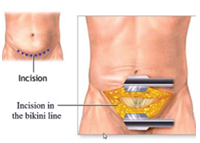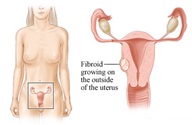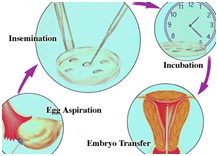Obs. & Gynecology Procedures
A hysterectomy consists in removing the uterus and it may be complete (when the body, fundus and cervix are removed) or partial (when only the uterine body is surgically removed). This procedure is normally performed by gynecologists and it is one of the most common gynecological surgeries. This type of surgery is used to treat some benign tumors, cancers of the ovaries, uterus or cervix, endometriosis.
A laparoscopic assisted vaginal hysterectomy is a relatively new procedure that allows some women with adhesions to be candidates for a vaginal hysterectomy but does not solve the problem of a too-large uterus and still requires that the cervix be removed.
A laparoscopic total hysterectomy can also be performed in women who need to have their cervix removed.
A Laparoscopic Total Hysterectomy involves removing the uterus and cervix. If the uterus is not greatly enlarged, the uterus (and possibly the tubes and ovaries) are removed vaginally, and the top of the vagina is sewn closed with sutures placed through the laparoscope. The apex, or top, of the vagina, is then supported by incorporating the uterosacral ligaments into the vaginal apex.
A Myomectomy is a surgical procedure to remove uterine fibroids — noncancerous growths that often appear in your uterus during your childbearing years. The surgeon's goal during myomectomy is to take out symptom-causing fibroids and reconstruct the uterus. Unlike hysterectomy, which removes your entire uterus, myomectomy surgery removes only the fibroids and leaves your uterus intact. It is the surgical removal of fibroids from the uterus. It allows the uterus to be left in place and, for some women, makes pregnancy more likely than before. Myomectomy is the preferred fibroid treatment for women who want to become pregnant. After myomectomy, your chances of pregnancy may be improved but are not guaranteed.Women who undergo myomectomy report improvement in fibroid symptoms, including heavy menstrual bleeding and pelvic pressure.
In vitro fertilization (IVF)
In vitro fertilization (IVF) means fertilization outside of the body. IVF is the most effective ART. It is often used when a woman's Fallopian tubes are blocked or when a man produces too few sperm. Doctors treat the woman with a drug that causes the ovaries to produce multiple eggs. Once mature, the eggs are removed from the woman. They are put in a dish in the lab along with the man's sperm for fertilization. After 3 to 5 days, healthy embryos are implanted in the woman's uterus.
Vaginal Prolapse Surgery
In vitro fertilization (IVF) A generalized weakness of the vaginal muscles and ligaments is much more likely to develop than are isolated defects. If a woman develops symptoms of one type of vaginal prolapse, she is likely to have or develop other types as well. Therefore, a thorough physical examination is necessary for the surgeon to detail what surgical steps are necessary to correct the vaginal prolapse completely. The typical surgical strategy is to correct all vaginal weaknesses at once.




